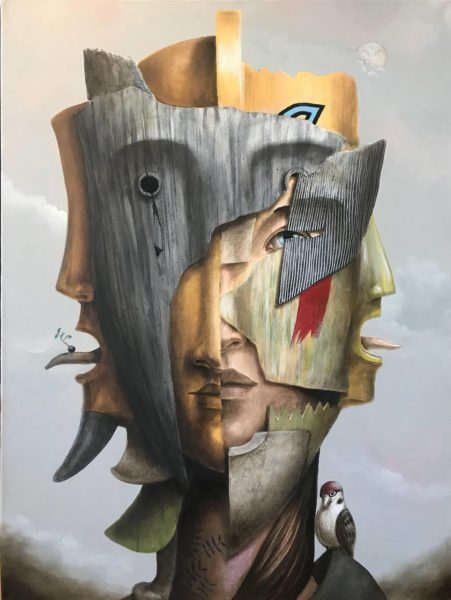Process drama is not the end-of-the-year-production.
Process drama is not acting in a second language on stage.
Process drama not a quick fix for your language exam.
So what is it?
Process drama is a dramatic form.
It takes time and committment.
Process drama is a collective art process.
The term was first used by Prof. John O’Toole in 1990 and then appeared in press in 1991, in an article by Prof. Brad Haseman. A year later, O’Toole published The Process of Drama (1992) which I think it is still the best scholarly work on the subject matter. Both Haseman and O’Toole are well-respected scholars and practitioners from Brisbane, Australia. I was lucky enough to do a PhD on Drama Education with Prof. Julie Dunn, who was in turn supervised by Prof. O’Toole.
It wasn’t until 1995 that the form gained popularity, thanks to the work of Prof. Cecily O’Neill, Irish playwright based in the States. In Drama Worlds, she outlines the aesthetic value of process drama and its connection with theatre and drama. Since joining Trinity College in 2015 I’ve been on the teaching team of the Master in Drama Education (M.Ed. Drama in Education), founded in 1998 by Carmel O’Sullivan, in consultation with Cecily O’Neill.
Process drama is all about co-creating a story by taking on different roles (a collective role; or individual roles) and engaging in meta-reflection (thinking about your reflection). You won’t sustain your role from beginning to end; you will take on several roles, then think about them, and play with time and space to deconstruct layers of the story – to analyse a theme. All participants (including the teacher) take on different roles and become involved in the creation of a ‘dramatic world’, as Cecily O’Neill famously put it, to create a web of meaning.
In process drama we are not trying to find a happy ending. We are not trying to fix anything. We are considering a given issue from multiple viewpoints. Process drama practitioners can work several backgrounds, including Second Language (L2) education.
A common misconception in L2 settings is related to the kind of dramatic experience generated in process drama. In this form, we are not sticking to one character; we are taking on several of roles. Look at the gorgeous artwork of Fabien Delaube’s (below and in other pages on this site): there are many different roles that co-exist, sometimes conflicting. Many symbols to decode.
Similarly, I can have multiple identity as language learners, but I am still mySELF. We are only trying different personae, taking different roles. For example, I am a beginner in Portuguese; when I travelled to Coimbra I may have been perceived as a turist in my make-shift Portuguese. But I am fluent in French; when I watch a film in French, I feel I am different from my Portuguese-beginner identity. Status and power also come into play: I feel my English is just fine as I chat to my daughter’s teacher, but put me in front of a board of executives and my language levels will drop.
So what is the point of process drama for L2 learning? Playing with different roles and perspectives can undo the beliefs that trap us into a particular mindset about who we are, and who we are not, as language speakers. Drama can break the classroom hierarchy, generating more authentic language. Skilful use of storytelling can fuel motivation to communicate.
Watch my Tazzina video for an example, or check out the resources below.
When the teacher takes on a role within the drama, interesting things can happen. Teacher-in-role as a strategy was created by pioneer Dorothy Heathcote (see O’Neill, 2015). It involves a radical change to traditional classroom patterns of interaction.
Teacher-in-role involves a status change: it reverses the Teacher/Students hierarchy of the traditional, teacher-centred approach, where the teacher may ask rhetorical questions to the students, encouraged to respond only when called upon. This requires the teacher to become aware that she/he is enacting a social role as ‘teacher’ in the classroom-environment, to consciously step out of this role, and take on a different role.
Through teacher-in-role, the facilitator can choose to have a higher or a lower status than the participants, setting up a more interesting dynamic in terms of agency, power and control. It also involves a language register change (connected to the role) and, more importantly, a willingness to take risks.
Kao and O’Neill’s (1998) Words into Worlds‘ is the first publication on the subject is a reference point in the field, the first port of call. Winston and Stinson’s (20112/2016) edited collection is also influential, with several studies, dissertations and textbooks published since then.
Must-have on process drama:
- Dramawise Reimagined by B.Haseman and J.O’Toole
- Putting Process Drama into Action, by B. Heap and P. Bowell
- Pretending to Learn, by J.O’Toole and J.Dunn
Check out:
- Association for Drama in Education in Ireland (ADEI)
- Miriam Stewart’s Learning English through Drama at Flying Turtle Productions
- Arts on The Move portal’s page on Drama in Education and process drama
- Patrice Baldwin’s website for excellent drama resources and professional developement opportunities
- Patrice Baldwin and Alicja Galazka’s Process Drama for L2 Teaching and Learning Webinar
Haseman, B. (1991). Improvisation, process drama and dramatic art. The Drama Magazine, 19–21.
Kao, S. M., & O’Neill, C. (1998). Words into worlds: Learning a second language through process drama. London: Ablex Publishing Corporation.
O’Neill, C. (1995). Drama Worlds: A Framework for Process Drama. Portsmouth: Heinemann.
O’Neill, C. (2015). Dorothy Heathcote on education and drama: Essential writings. Abington, Oxfon: Routledge.
O’Toole, J. (1990). Process, art form and meaning. Paper presented at the 14th National Association for Drama in Education (NADIE) Conference, Sydney.
O’Toole, J. (1992). The process of drama: Negotiating art and meaning. London: Routledge.
Winston, J., & Stinson, M. (Eds.). (2016). Drama education and second language learning. Routledge.



